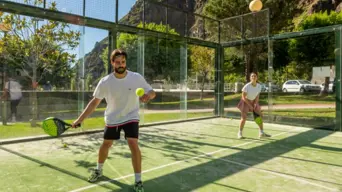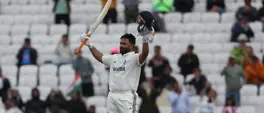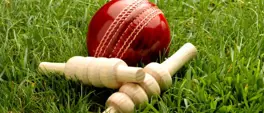Padel 101: A beginner’s guide to the fast-growing racket sport
Tasleem Gierdien
22 October 2025 | 6:39In recent years, padel has taken the world by storm. Here's what to know about the popular sport.

In recent years, padel has taken the world by storm, becoming one of the fastest-growing sports across Europe, the Middle East, and Latin America.
A hybrid of tennis and squash, padel offers a dynamic, accessible, and highly social experience that appeals to players of all ages and skill levels.
One of the biggest draws of padel is its low barrier to entry. It’s relatively easy to learn the basics, making it fun from the first game, even for beginners. Because it doesn’t rely heavily on physical strength or advanced technique, mixed-gender games and intergenerational matches are common.
Additionally, the social aspect of doubles play and the smaller court promote constant interaction, quick rallies, and lots of laughs.
It’s a sport that balances competitiveness with fun, making it addictive for many who try it.
Africa Padel, which pioneered the sport throughout the country, is South Africa' biggest padel group.
"It's an accessible sport and courts are a social hub, for social gatherings and activities, like birthday parties," explains Africa Padel's Amy Hopkins.
"You can rock up with your tekkies and T-shirt and just play," she says.
History of padel
The sport quickly spread to Spain in the early 1970s, thanks to Prince Alfonsoof Hohenlohe, who introduced it to Marbella. Padel gained popularity across Latin America, especially in Argentina, and throughout Europe in the following decades.
Formalised by the creation of the International Padel Federation in 1991, the sport has since exploded in popularity, particularly in Spain, and is now played in over 100 countries with over 30 million active amateur players globally.
What is padel?
Padel is a racket sport typically played in doubles on an enclosed court that’s about one-third the size of a tennis court. The court has walls, usually made of glass or mesh, that play a strategic role, much like in squash.
The game is played with solid, perforated rackets (not strung like tennis rackets) and a ball that’ very similar to a tennis ball, but slightly less pressurised. The result is a game that emphasises strategy, reflexes, and teamwork over raw power.
Key rules and court layout
-
Court dimensions: A padel court is 10 metres wide and 20 metres long, enclosed by glass and mesh walls that can be used during play.
-
Net height: The net is 88 cm high in the centre and 92 cm at the sides.
-
Scoring: Padel uses the same scoring system as tennis: love, 15, 30, 40, deuce, etc.
-
Serves: Serves are underhand and must bounce once in the service box before being returned. The server must stand behind the service line and bounce the ball before hitting it diagonally into the opposite service box.
-
Ball in play: After the serve, the ball may bounce once on the ground and then hit the walls. Players can also hit the ball off their own wall to return a shot.
-
Out of play: The ball is out if it bounces twice, hits the net or fence directly, or lands outside the marked court lines.
Golden point in padel
The Golden Point in padel is a rule used to decide a game when the score reaches 40-40 (deuce). Instead of requiring a player or team to win by two points, the next point wins the game.
Here's how it works
-
At 40-40, it’s called the Golden Point.
-
The receiving team chooses which side (left or right) will receive the serve.
-
The winner of that single point wins the game.
Equipment
-
Padel racket: Solid, with holes and no strings. They come in different shapes: round (control), teardrop (balance), and diamond (power).
-
Padel balls: Similar to tennis balls but with slightly lower pressure to better suit the smaller court.
-
Footwear: Tennis or specific padel shoes with good grip are ideal, especially on artificial turf surfaces.
Some padel courts, like Africa Padel, allow you to rent equipment.
Tips for beginners:
-
Focus on control over power: Precision and positioning are more important than hitting hard.
-
Learn to use the walls: The back and side walls are part of the game; use them to extend rallies and play smarter shots.
-
Communicate with your partner: Since padel is always played in doubles, teamwork is key.
-
Stay near the net when attacking: The net position allows for greater control and offensive opportunities.
-
Practice your serve: A consistent underhand serve is essential for starting points effectively.
You don't have to be a member to play at Africa Padel.
A padel court booking at Africa Padel costs between R400 and R500 if you're four people.
Find an Africa Padel near you.
To listen to Hopkins in conversation with Pippa Hudson on CapeTalk's Lunch Show, click below:
Get the whole picture 💡
Take a look at the topic timeline for all related articles.

















